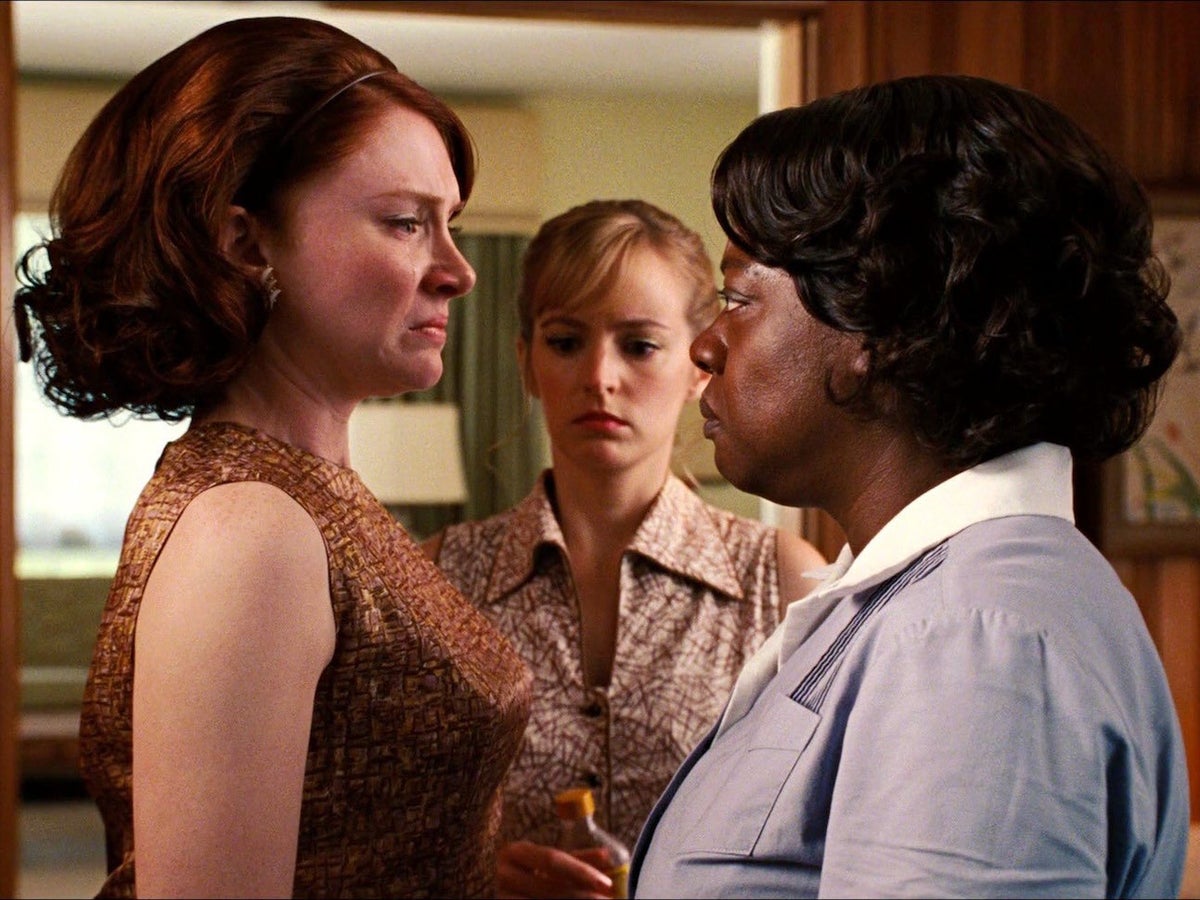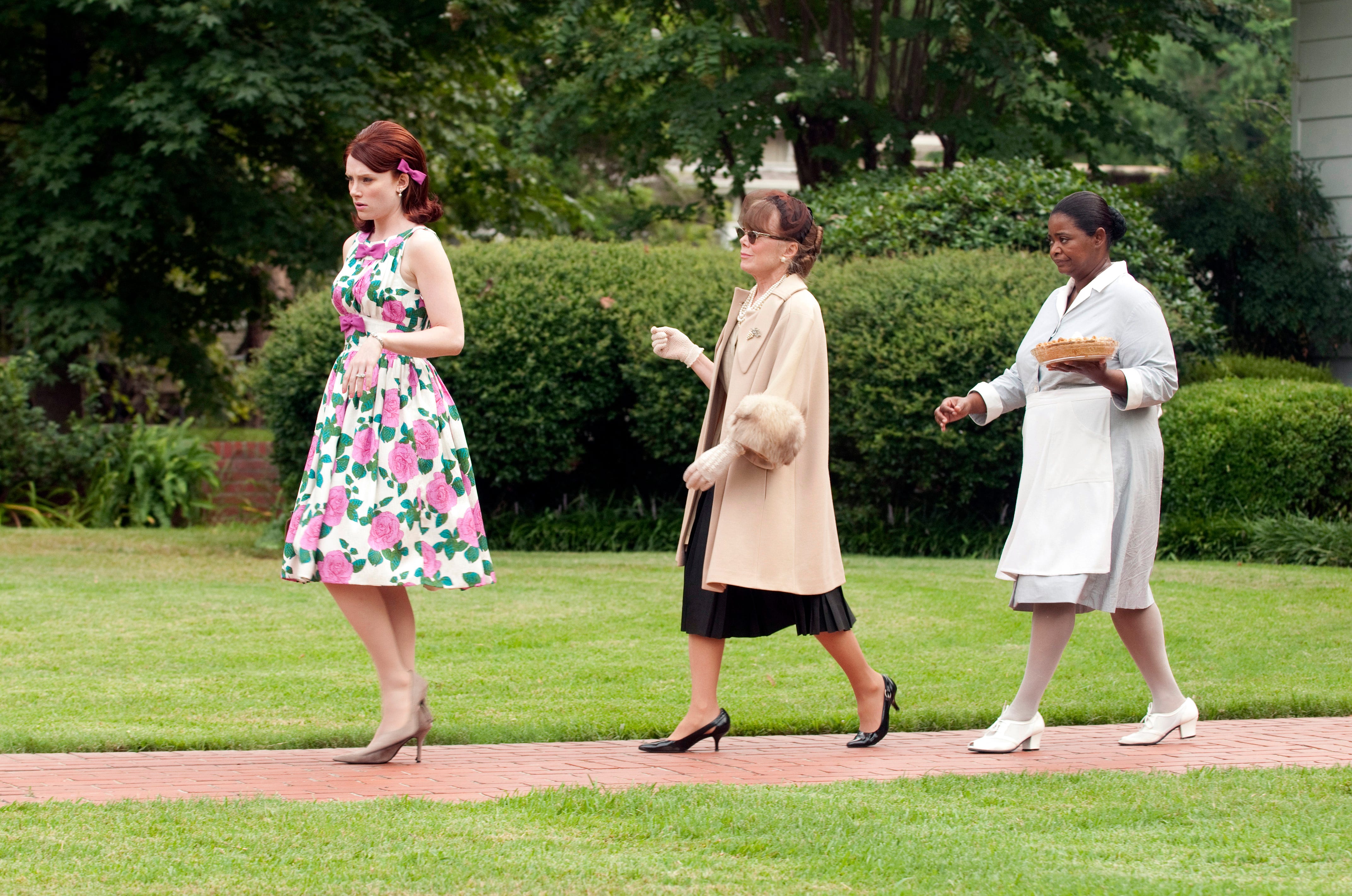Summary of “The Help” by Kathryn Stockett.
The Help takes place in August 1962 in Jackson, Mississippi. At a time when you could find a lot of sexism and racism in the city. The protagonists of this story are three women, a white woman named Skeeter who is a writer who returns to her house after finishing her studies, and two black women named Minny and Aibileen, both of whom work as servants in wealthy households.
Aibileen is a 53-year-old woman who just lost her son in a workplace accident. Also, she has raised seventeen children from white families in her lifetime. She works for the Leefolts who have a 2-year-old girl named Mae Mobley who is physically abused and neglected by her mother Elizabeth. Throughout the novel, Aibileen does everything she can to boost Mae Mobley's self-esteem and tries to teach her about civil rights and racial equality.
On the other hand, we have Minny who is an excellent cook and a very direct person, who works for Hilly Hoolbrok taking care of her mother Miss Walter. One day Minnie is accused of being a thief by Hilly in order to fire her, so Miss Walter leaves for an asylum and Minnie is left without a job. However, Minnie decides to take revenge against Hilly.
After some time of having carried out her revenge, Minnie finds a job with Johnny and Celia Rae Foote Johnny is Hilly ex-boyfriend, and Celia is a Marilyn Monroe double comes from the field. She is shunned by the ladies of high society throughout the novel. Celia makes Minny promise to hide her presence from her husband Johnny from her, which causes the maid a lot of stress.
After knowing the story of two maids Kathryn, the author, shows us the life of Eugenia "Skeeter" Phelan who, after returning from a game with her friends, narrates that when she was in her fourth year of university her maid and her confidant Constantine disappeared mysteriously and his family won't tell him why he left.
Skeeter is in contact with an editor at a publishing house in New York, Elaine Stein. Miss Stein advises Skeeter to find any job she can find for a newspaper and then use her spare time to find something controversial to write about.
In this part you can see how the lives of these three women come together because Skeeter gets a job at the Jackson Journal a place where she writes the Miss Myrna column, which deals with housework and relationships, two things about which Skeeter knows nothing. So, she seeks help from a maid to answer the questions that come to her column. With Elizabeth's resigned permission, Skeeter begins meeting with Aibileen for help. Skeeter learns that Aibileen's son, Treelore, was writing a book about his experiences in Mississippi at the time of his death. This motivates Skeeter to try to convince the neighborhood maids to agree to be interviewed for a book showing her views.
Hilly sets Skeeter up on a blind date with Stuart Whitworth, the son of a senator. Stuart gets drunk and insults Skeeter. She never wants to see him again. In December, Minny is discovered by Johnny Foote, the husband of her employer. Johnny realized that his wife Celia had help as soon as she improved the food. He is happy that Minny is here. However, Johnny asks Minny to pretend that he doesn't know about her.
Aibileen agrees to co-write Skeeter's book on the lives of Jackson's maids, and the two-start meeting at night. Eventually, Minny agrees to work with them as well. Aibileen tries to get the other maids to join in, but they are all too scared. Three months after their failed first date, Skeeter and Stuart go out again and even share a passionate kiss. Stuart becomes a normal part of Skeeter's life, though he doesn't know about his secret writing project.
In May 1963, Celia miscarries and reveals that she is the fourth baby she has lost. She fears that if she can't conceive babies, Johnny won't love her anymore. When Minny tries to convince her that Johnny loves her, Celia realizes that Minny and Johnny have found each other. She begs Minny to pretend to Johnny that Celia doesn't know that Johnny doesn't know about Minny.
In July, Hilly's new maid, Yule May who be standing in for Minnie, steals one of her rings. For, Yule has twin sons and is short of the $75 she needs to send both sons to college instead of just one. When Hilly refused to lend him the money, Yule stole the ring from her. Hilly finds out about her and uses her influence to fine Yule $500 and sentence her to four years in the state penitentiary. Anger at Hilly for the way she treated Yule May, plus some persuasion from Minny, convinces eleven more maids to tell her stories for Skeeter's book.
Skeeter and his family have dinner at Stuart's parents' house. Over dinner, the topic keeps coming back Stuart's ex, Patricia Van Devender, who cheated on Stuart with a white civil rights activist. At the end of the night, Stuart breaks up with Skeeter. At the Jackson League of Ladies Benefit Gala, Celia Foote gets very drunk and tries to get Hilly to accept her into the circle of high-society ladies. She ends up ripping Hilly's dress and throwing up on the floor. There she does not make good progress. In the days that follow, Celia becomes depressed and is about to leave Johnny because she doesn't think she's good enough for him. Minny convinces her to let her stay with her.
After these events, Minnie reveals that during the last days that she took care of Hilly's mother, Miss Walter, Minny made a chocolate cake with a touch of her own poop and that Hilly ate two pieces of the cake. That's why Hilly tries so hard to ruin Minny around town. Minny convinces Skeeter and Aibileen that her best protection against Hilly, if her book gets out of her, is to include the cake story in Minny's section. Even if Hilly recognizes the town as Jackson, she won't say anything because it would mean admitting to eating poop.
In December, Skeeter learns that Constantine, the maid who mysteriously disappeared from his life, is dead. After Constantine's daughter Lulabelle and Skeeter's mother Charlotte got into a confrontation, Constantine was fired from her. She moved to Chicago with Lulabelle and died three months later. Also in December, Skeeter and Stuart get back together. At the end of December, Skeeter sends the manuscript of the book, which contains the stories of the maids and is called Maids and Ladies, to Elaine Stein in New York.
In January, Stuart proposes to Skeeter. She agrees, but when she tells him about Maids and Ladies, he takes her proposal back. Also in January, Skeeter, Aibileen, Minny, and the other maids learn that Maids and Maids is going to be published.
When the book comes out, Hilly immediately suspects that the book is set in Jackson and begins campaigning against the maids she suspects were involved. But when she gets to the last chapter, the one about Minny, and reads the cake incident, she changes her mind and tells as many people as possible that the book doesn't take place in Jackson. Still, Hilly confronts Skeeter about her involvement in the book and vows revenge on Aibileen and Minny.
Skeeter is offered a job in New York, which Minny and Aibileen convince her to take. Before leaving, Skeeter arranges for Aibileen to take her old job writing the Miss Myrna column.
Meanwhile, Celia finally tells Johnny about the abortions and about Minny. Johnny and Celia tell Minny that she has a permanent job with them. Meanwhile, Hilly arranges for Minny's abusive husband, Leroy, to be fired from his job and told it's Minny's fault. Leroy then tries to kill Minny but she takes all five of her children, leaves Leroy and moves out of town, but not far from her work with Celia.
However, Hilly is still not satisfied and proves to Elizabeth that Aibileen is the author of a chapter of Maids and Maids. Hilly tries to frame Aibileen for stealing silver, but Elizabeth doesn't cooperate with her plan. However, they do fire Aibileen, anyway. After an emotional goodbye to Mae Mobley, Aibileen discovers that she is about to start a new life, one in which she plans to dedicate herself to writing about her life and the people she meets.
#Alicia Sagastume



.jpg)

































